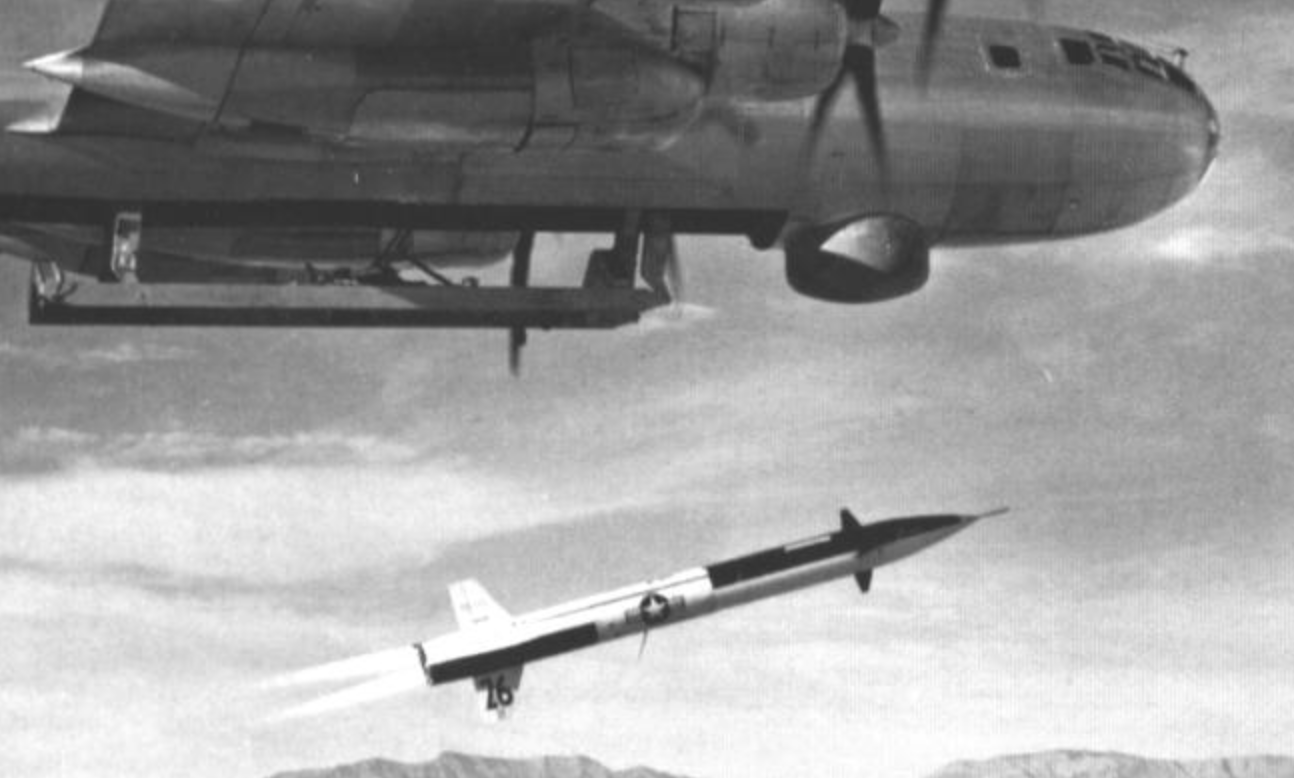Bell X-9 Shrike: Difference between revisions
Jump to navigation
Jump to search
m Removed a few double spaces |
No edit summary |
||
| (3 intermediate revisions by the same user not shown) | |||
| Line 1: | Line 1: | ||
[[File:Bell X-9.png|thumb|right|In 1951, the RTV-A-4 was redesignated as X-9, and the flight test program continued until January 1953. The X-9 was a rather successful test vehicle, and some thought was actually given to production of a limited number of Shrikes as interim operational missiles until the B-63/GAM-63 Rascal would become available. However, the limited range and payload of the X-9 eventually killed that proposal. In total, 31 RTV-A-4/X-9 vehicles were built. Photo: Bell Aerospace via Jay Miller|333px]] | |||
[[Image:Bell X-9 trailer.jpg|thumb| | [[Image:Bell X-9 trailer.jpg|thumb|333px|Bell X-9 on its trailer]] | ||
The '''Bell X-9 Shrike''' was a prototype [[Surface-to-air missile|surface-to-air]], [[Liquid fuel|liquid-fueled]] [[guided missile]] designed by [[Bell Aircraft]] as a testbed for the nuclear-armed [[GAM-63 RASCAL]]. It is named after the [[shrike]], a family of birds. | The '''Bell X-9 Shrike''' was a prototype [[Surface-to-air missile|surface-to-air]], [[Liquid fuel|liquid-fueled]] [[guided missile]] designed by [[Bell Aircraft]] as a testbed for the nuclear-armed [[GAM-63 RASCAL]]. It is named after the [[shrike]], a family of birds. | ||
| Line 36: | Line 36: | ||
{{Reflist}} | {{Reflist}} | ||
* [https://web.archive.org/web/20200425225303/https://history.nasa.gov/monograph31.pdf ''American X-Vehicles''] (PDF) | * [https://web.archive.org/web/20200425225303/https://history.nasa.gov/monograph31.pdf ''American X-Vehicles''] (PDF) | ||
[[Category:Experimental missiles]] | [[Category:Experimental missiles]] | ||
Latest revision as of 11:29, 24 April 2025


The Bell X-9 Shrike was a prototype surface-to-air, liquid-fueled guided missile designed by Bell Aircraft as a testbed for the nuclear-armed GAM-63 RASCAL. It is named after the shrike, a family of birds.
Testing
Thirty-one X-9 rockets were delivered, flying from April 1949 to January 1953. The program was used to gather aerodynamic and stability data, and to test guidance and propulsion systems for the RASCAL.[1]
None of the missiles survived testing. The only known remaining fragment of an X-9 is part of a vertical stabilizer, at the Larry Bell Museum in Mentone, Indiana.[2]
Specifications (X-9)
General characteristics:
- Length: 22 ft 9 in (6.9 m)
- Wingspan: 7 ft 10 in (2.4 m)
- Diameter: 1 ft 10 in (0.56 m)
- Wing area: 70 ft2 (6.5 m2)
- Weight (empty): 2,125 lb (964 kg)
- Weight (loaded): 3,500 lb (1,588 kg)
- Propulsion: Bell XLR65-BA-1 liquid-fuel rocket engine, 3,000 lbf (13.3 kN) thrust
Performance:
- Maximum speed: Mach 2.0
- Range: 50 mi (80 km)
- Service ceiling: 12.3 mi (19.8 km)
- Rate of climb: m/min (ft/min)
- Wing loading: kg/m2 ( lb/ft2)
- Thrust/weight:
See also
- Bell GAM-63, a related development
- List of experimental aircraft
References
- American X-Vehicles (PDF)
- ↑ Yenne, Bill (2018). A Complete History of U.S. Cruise Missiles. Forest Lake, MN: Specialty Press. p. 61. <templatestyles src="Module:Citation/CS1/styles.css"></templatestyles>ISBN 978-1-58007-256-4.
- ↑ AMERICAN X-VEHICLES Centennial of Flight Edition SP-2003-4531 An Inventory—X-1 to X-50. Retrieved 5 December 2021 from link
